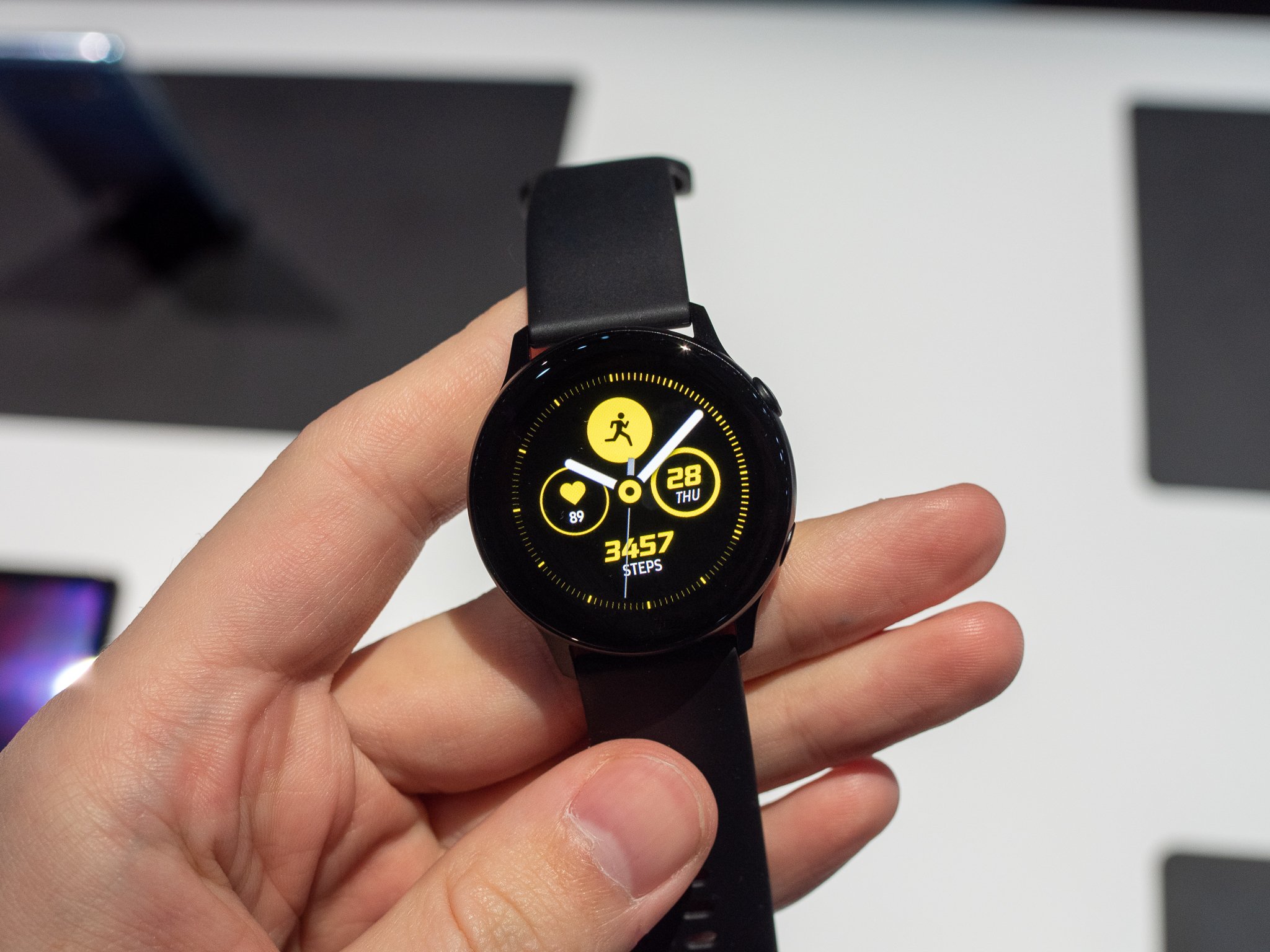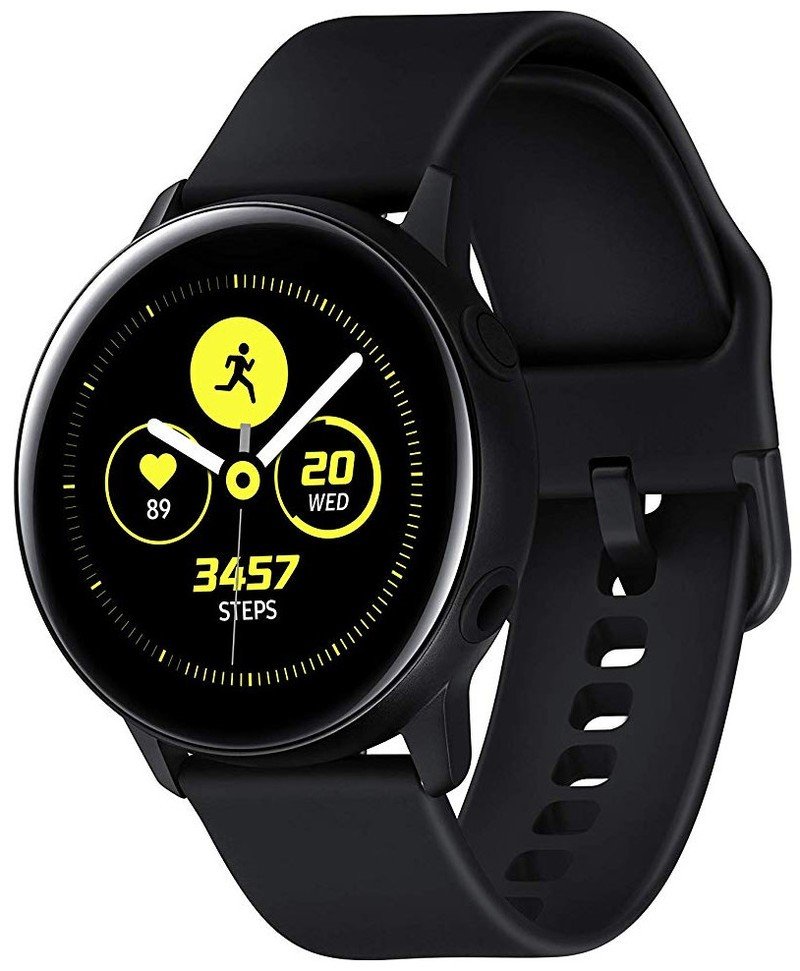Samsung Galaxy Watch Active vs. Galaxy Watch: Which should you buy?

Galaxy Watch Active

The Galaxy Watch Active is focused on providing a great fitness tracking experience in a compact and light smartwatch form factor. It succeeds, while also being affordable and pretty good looking (if a bit unassuming). It also has apps and widgets to provide more functionality than most fitness bands, but misses out on the rotating bezel, larger battery, and bigger screen of the Galaxy Watch.
Galaxy Watch Active
Fitness first
Galaxy Watch

The Galaxy Watch can do everything the Watch Active can but adds in a larger screen, bigger battery, and a rotating bezel that makes navigation a breeze. But in return, it's considerably larger and heavier, which is quite a bit of compromise that you may not be willing to take on if you're planning to use this wearable for intense fitness tracking.
Galaxy Watch
Do more
The Galaxy Watch Active and standard Galaxy Watch share a lot of features but are aimed at different audiences. Here's how you can pick which one is right for your needs.
What's the difference between the Galaxy Watch Active and Galaxy Watch?
The Galaxy Watch Active isn't particularly impressive for what features it offers or the software it runs because it effectively has the same core capabilities as the Galaxy Watch, which debuted several months prior. But what's impressive is that the Galaxy Watch Active brings those features down to a much smaller overall size, splitting the difference between what we'd normally consider "fitness bands" and full-on smartwatches.
You get full smartwatch software on the Watch Active, but it's limited by its hardware.
With the Galaxy Watch Active, you get all of the same fitness tracking capabilities as the Galaxy Watch, and also get the full-featured Tizen software that many people enjoy. That means you get a full connection to your smartphone, information-rich widgets, downloadable watch faces, and apps you can install if you so desire. The Galaxy Watch Active's software puts a bit more focus on the fitness side, but all of the features are there just as they are on the more general-purpose Galaxy Watch.
But even though the Galaxy Watch Active can technically do everything the Galaxy Watch can in terms of software, it's not going to be as good of an experience. With a smaller screen and no rotating bezel to quickly move through menus and widgets, the Galaxy Watch Active is going to feel a bit restrictive. Yes, we're talking about smartwatches here, so you can't get too much done in either case, but the Galaxy Watch's rotating bezel really is a dramatic improvement over scrolling and swiping with your finger for every single interaction.
The Galaxy Watch also has a larger battery, and even though it's not much more every little bit counts with these smartwatches. And if you're so inclined to take speakerphone calls or get notification sounds on your wrist, you'll want to know that the Galaxy Watch Active doesn't have a speaker like the Galaxy Watch.
Be an expert in 5 minutes
Get the latest news from Android Central, your trusted companion in the world of Android
| Header Cell - Column 0 | Galaxy Watch Active | Galaxy Watch (42 mm) |
|---|---|---|
| Display | 1.1-inch, 360x360Gorilla Glass | 1.2-inch, 360x360Gorilla Glass DX+ |
| Battery | 230mAh | 270mAh |
| Storage | 4GB | 4GB |
| GPS | Yes | Yes |
| NFC | Yes | Yes |
| Heart rate | Yes | Yes |
| Resistance | IP68, 5ATMMIL-STD-810G | IP68, 5ATMMIL-STD-810G |
| Band size | 20 mm | 20 mm |
| Case material | Aluminum | Stainless steel |
| Dimensions | 39.5 x 39.5 x 10.5 mm25 g (w/o strap) | 45.7 x 41.9 x 12.7 mm49 g (w/o strap) |

But it isn't a total win for the Galaxy Watch. The biggest victory the Galaxy Watch Active can claim is in size and weight. The aluminum case is smaller in every dimension than the Galaxy Watch, and it's just shy of half the weight (without a strap). With a smoother casing that sits closer to your wrist and has a smaller diameter face, the Galaxy Watch Active is far more likely to stay out of your way while you're at the gym or on the go — and that's particularly important if you don't have a large wrist.
Just be honest about whether you're focusing on fitness or daily usable features — that'll make this an easy decision.
Both smartwatches will do the same things, they just aren't well-suited to perform equally well at all of them. Which you choose will simply come down to how you intend to use the wearable most often. If you're primarily focused on fitness tracking, including time at the gym or running, you're probably better off with the much smaller and lighter Galaxy Watch Active. Sure it's short on a few features, but the last thing you want when you're trying to exercise is to be burdened by a big smartwatch on your wrist. If instead you're mostly looking to get daily tasks done with the assistance of a smartwatch, and your activity tracking is mostly constrained to daily step counts and the occasional workout, the Galaxy Watch could offer a better overall package for you.
The Galaxy Watch also has one final trick that the Galaxy Watch Active can't match: a larger case version with a bigger screen and considerably bigger battery. The 46mm Galaxy Watch is about $300, has a 1.3-inch display, and offers about an extra day of battery life. It's very big and won't be comfortable for as many types of workouts, even compared to the 42mm Galaxy Watch, but that option is there for people who want to truly do as much as possible with their smartwatch.

Striking a balance between a fitness band and smartwatch
The Galaxy Watch Active does its best to balance between being small and light like a fitness band while having a full set of smartwatch features. The focus here is on fitness, and it's a darn good fitness tracker, but it misses out on extra smartwatch features that the Galaxy Watch has. In return, it's much smaller and lighter, making it a far better companion for your workouts.

A do-everything smartwatch that adds bulk in the process
The Galaxy Watch is more of a "traditional" smartwatch that attempts to replicate many smartphone features on your wrist. It can do all of the same fitness tracking that the Galaxy Watch can, but also adds apps and smartphone integration. The only downside is that it's much larger, which makes it a subpar choice if your main goal is effortless fitness tracking.
Andrew was an Executive Editor, U.S. at Android Central between 2012 and 2020.

